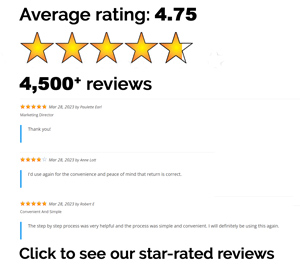The latest relief bill has expanded the unemployment benefits for millions of Americans who have been out of work since the pandemic began. Self-employed workers and independent contractors don’t qualify for traditional unemployment benefits, but they may be eligible to receive support under the Pandemic Unemployment Assistance (PUA) program. If you qualify, you can receive additional payments of $300 per week until September 5, 2021. This is on top of whatever your state gives you.
Workers who earned money through a W-2 job and self-employment income may also be eligible for the Mixed Earner Unemployment Compensation (MEUC) benefit. Eligible workers will receive an additional $100 per week until September. Here’s what you need to know about coronavirus unemployment benefits.
How to qualify for the PUA program
You can receive unemployment benefits if you’re unable to work due to the pandemic. This includes people who have been diagnosed with COVID-19 or taking care of someone else who has it. You can also qualify if any of the following applies to you:
- You’re self-employed (includes independent contractors and gig workers).
- You can’t work because your child’s school closed, and you need to take care of them.
- You got a job offer, but it fell through or you can’t get there due to the pandemic.
- You quit your job due to COVID-19.
- You don’t qualify for regular or extended unemployment benefits and were affected by COVID-19.
You’re not eligible for benefits if you can work from home or you’re getting paid leave.
Who is eligible for the MEUC benefit
You qualify for the extra $100 a week benefit if you collect traditional unemployment insurance and earned at least $5,000 in self-employment income. You’re not eligible if you’re receiving PUA benefits.
How to apply for unemployment insurance benefits
You’ll need to contact your state’s unemployment insurance office online or by phone to apply for benefits. Make sure you have the following information handy when you file your claim:
- Your Social Security number and driver’s license number
- Your mailing address and phone number
- Names and addresses of all your employers for the last 18 months
- Your start and end dates
- You’ll also need your bank account and routing numbers if you want direct deposit
Missing or incorrect information can delay your payments.
There’s a new $10,200 unemployment tax break
Normally when you receive unemployment benefits, the full amount is considered taxable income. This can result in a large tax bill. One of the biggest changes to come from the new relief bill is the new unemployment income exclusion. If your modified adjusted gross income is $150,000 or less, you don’t have to pay taxes on up to $10,200 of unemployment compensation. Married couples filing a joint return can exclude up to $20,400 if both spouses were unemployed. Any amounts above the exclusion limit are still taxable. Thanks to the rule change, you may be able to get a bigger refund or at least owe less money when you file your taxes.
How to claim the tax break
ezTaxReturn.com has updated their tax program to support the unemployment income exclusion. So, if you’ve been waiting to do your taxes, file now. With their step-by-step guidance, you can e-file your federal and state returns in just 30 minutes.
What about people who’ve already filed?
If you did your taxes before the relief bill was passed, don’t worry. The IRS plans to automatically recalculate the taxes on your unemployment benefits and begin issuing refunds in May. There’s no need to file an amended return unless the exclusion makes you newly eligible for tax credits and deductions not claimed on your original return.
File your taxes fast and ez in 30 minutes or less.




